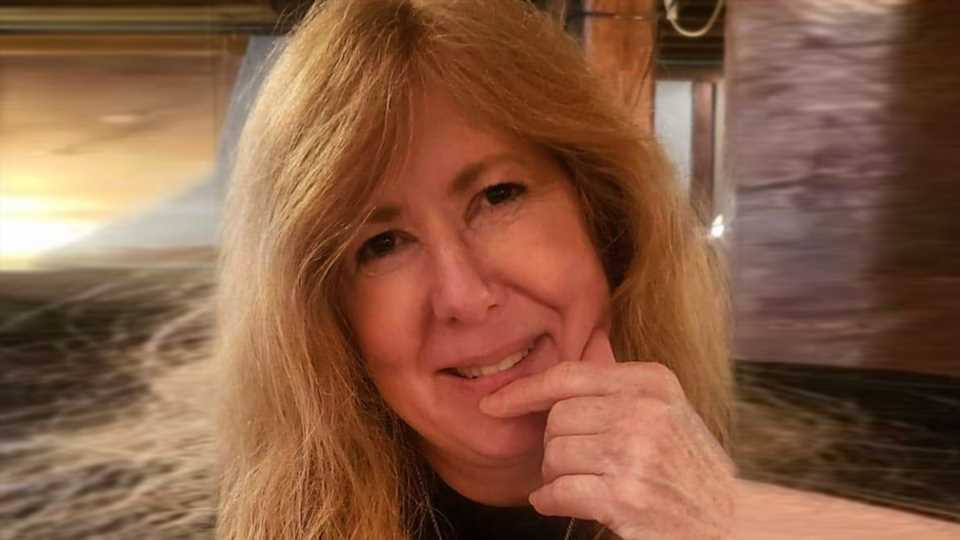A HOMEOWNER has revealed how she transformed a worn out Greyhound bus into a tiny house – using a few simple tricks to make it more roomy.
Brenda Mason Parmelee created her miniature traveling home of dreams after living in a mansion.


The author and speaker wanted to free herself from the financial pressures of modern life and adjusted her space accordingly.
Speaking to The U.S. Sun, she urged anyone looking to start their tiny home journey to first get rid of unneeded items.
"For me, it's the foundational steps of decluttering," Brenda explained.
"If you know you want to go to a bus or a van, if you kind of know the size that you're going to, that's what you're going to be downsizing toward."
Brenda, who shares her tips in a 31-day guide, continued that "figuring out resources" and discovering what you don't need is a big step, as it was for her Greyhound bus project in Virginia.
Items could be sold at an estate sale or through other avenues to help get extra cash amidst the downsizing process.
"I knew I was going to the bus," the tiny home owner explained.
She added that the walk-in closet at her former home was as big or bigger than how much space she would have in the Greyhound, so it provided a template for what she needed moving forward.
Most read in Lifestyle

Fulham's Pereira stretchered off with suspected broken leg in worrying scenes

One dead and seven injured as knifeman goes on bloody rampage near club

'Meghan killed me -then she mourns me', says estranged dad Thomas Markle

Reality star bravely comes out as bisexual after stint on Channel 4 show
"I didn't need to have 20 pairs of jeans," Brenda explained.
"I could have three pairs of jeans…and I had a coat that could handle like a light, breezy day that would also go to freezing temperatures, so I wanted items that would serve me for the one function — and that saves space a lot."
Brenda said moving to the Greyhound bus, therefore, gave her perspective on the essential clothing items required for the space.
"I was coming into a different lifestyle," the tiny homeowner told The U.S. Sun.
As to why she made that seemingly drastic lifestyle change, Brenda said that the tiny mobile house offered her less stress regarding money along with the ease of keeping a small space clean more often.
"I wanted financial freedom, I wanted to be able to breathe and just have space around me," she explained.
"I didn't want to spend all of my time in America — in America, we tend to clean and dust — I could go through my entire house and have it spick and span in 15 minutes, leave to go travel or do whatever, and when I came back home, it's like walking into a model home."
The builder continued: "I always dreamed of that.
"People have paid an awful lot of money on rent and on a mortgage, and for 30 years or 45, and then they refinance, and I didn't want all of my money going to that."
"I wanted to be able to buy the groceries I wanted to buy, I wanted to travel — but I still wanted a home base," Brenda noted.
I didn't want to spend all of my time in America — in America, we tend to clean and dust — I could go through my entire house and have it spick and span in 15 minutes, leave to go travel or do whatever, and when I came back home, it's like walking into a model home.
Not to mention, that home base was only recently moved from Utah to Virginia, according to the tiny homeowner, which is roughly a 32-hour drive, spanning over 2,000 miles.
She explained that if she were moving from her mansion to another larger house, it could cost her up to $30,000.
At the time, she was only getting checks for around $700 per month as guaranteed income, which negated similar high costs.
"It was a very small pension that I knew I had," she said.
The author and speaker also wasn't working and had no desire to do so to pursue other passions.
"I didn't want to have to work to put a roof over my head and still not have money to do anything else," Brenda told The U.S. Sun.
Growing up as an only child, Brenda said she also was inclined to feel as though she didn't need to have a lot of material items with her anyways, which only drew her closer to a tiny home and focus on making money to live the way she desired.
However, the Greyhound bus still needed utilities and other accessories to function like a house.
For those necessities, Brenda says she mostly uses solar panels and brings her own water that she brings to the Greyhound.
Solar provides most of what she needs, but she still recommends that people have more than one power source just in case.
When utilities are covered, lastly, ensuring that your tiny home is in the right location for what you desire is crucial, according to Brenda.
"You need to look and see, and you can't just say, 'Virginia or Florida,' each county has its own zoning rules," the author and speaker explained.
"You have to really pay attention to codes."
In the Greyhound, because it can appear to act as an RV, Brenda says she "flies under the radar" at times.
Despite the benefits, the tiny homeowner still received judgment over her lifestyle change.
"People used to think I was nuts," she said of her pursuits.
"But at the same time, they were envious of the lifestyle… I don't have another 20 years of mortgage payment left."
"Yeah, it's a big deal right now, a lot of people are living under the radar or smack out in front letting everybody know," Brenda said.
Read More on The Sun

Love Island’s Tasha forced to deny she’s had a boob job after bikini snap

I’m so good at make-up trolls call me a catfish and a clown
For more related content, check out The U.S. Sun's coverage of a builder who crafter a tiny home for under $2,000.
The U.S. Sun also has the exclusive story of a tiny home builder who makes affordable housing for others after living in a shipping container with over 20 people.




Source: Read Full Article

